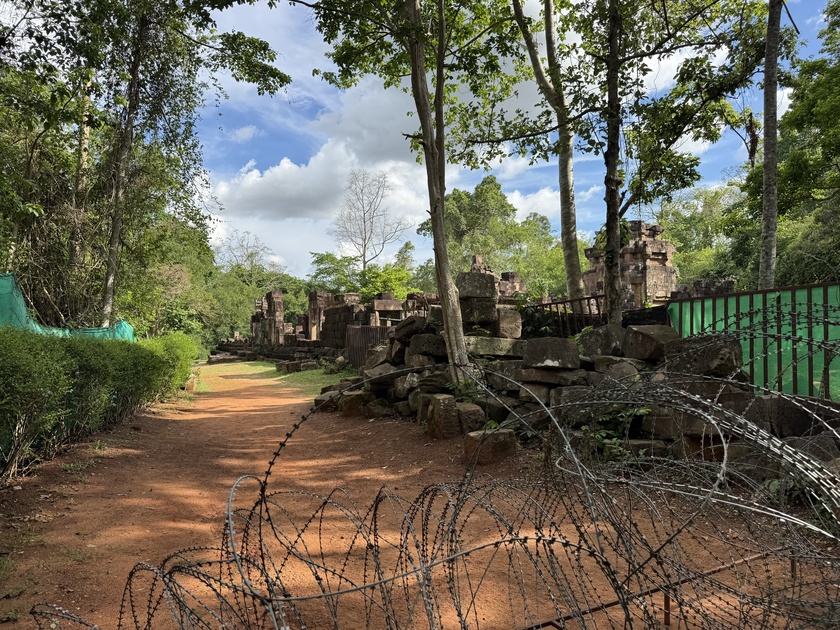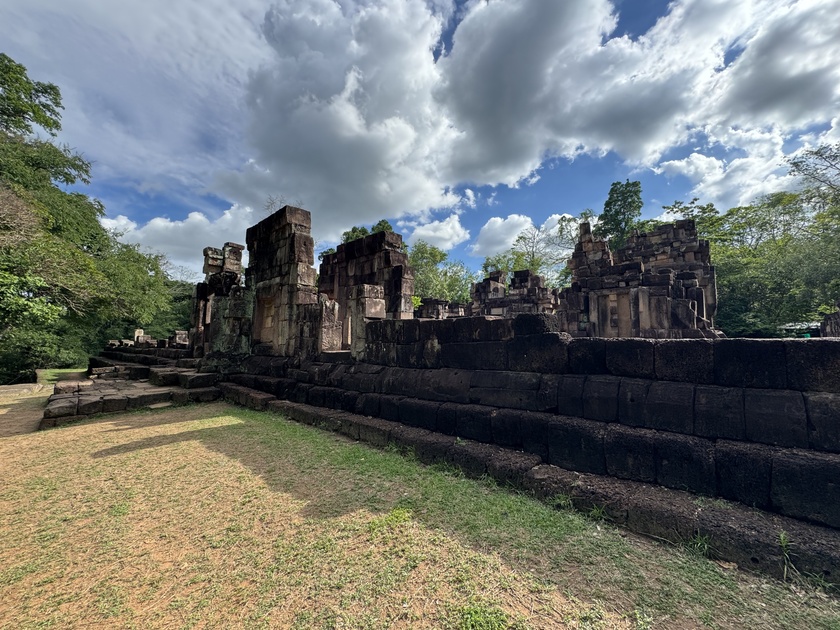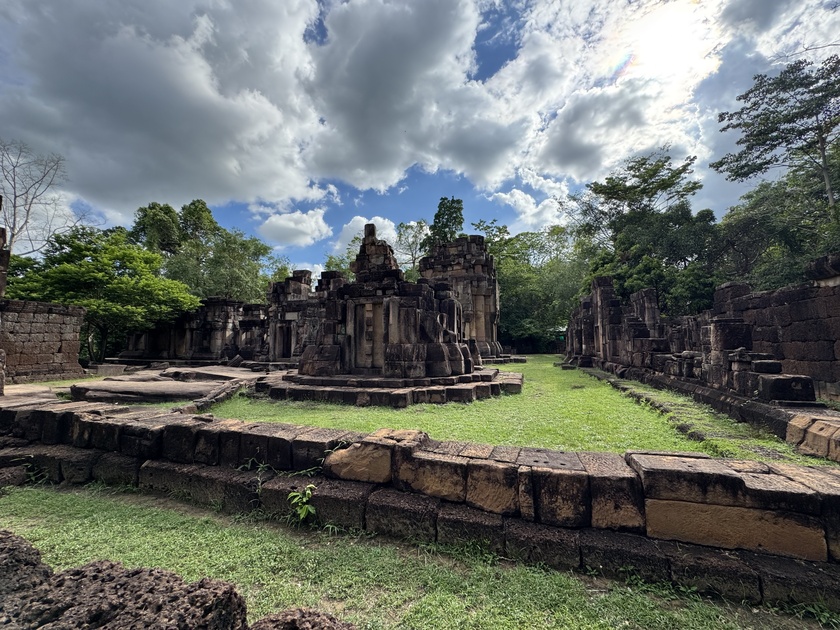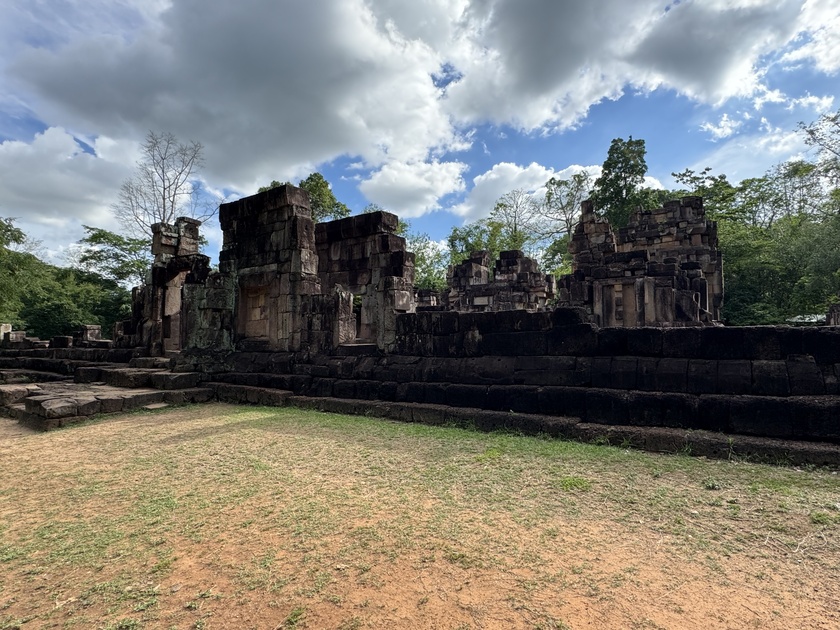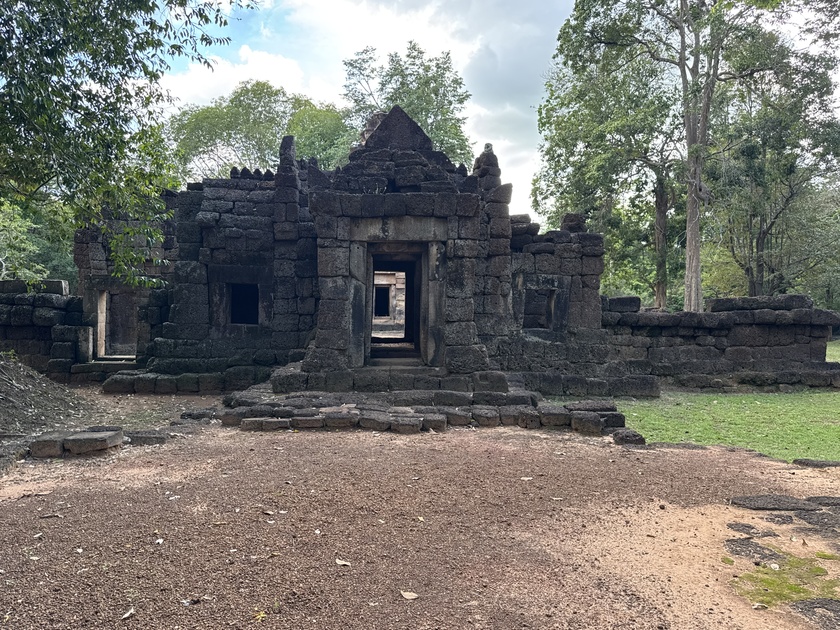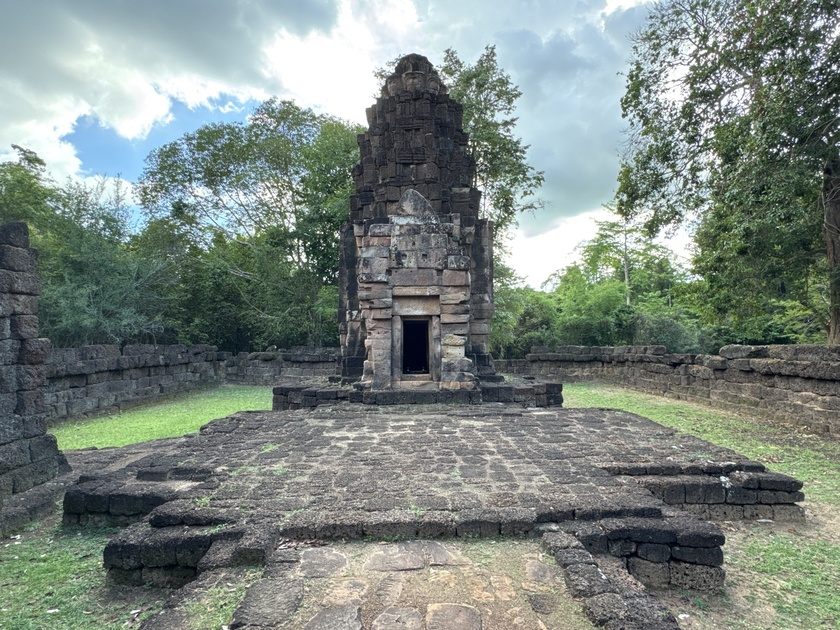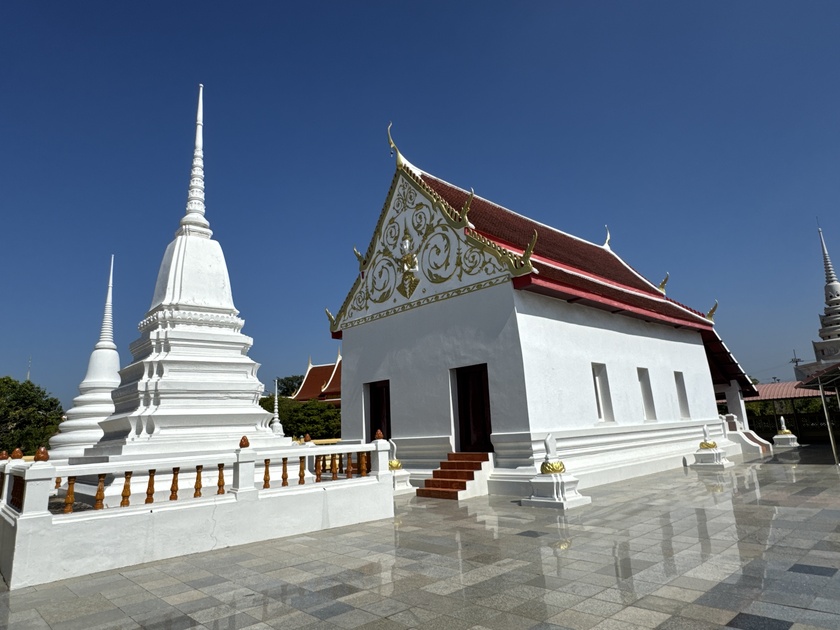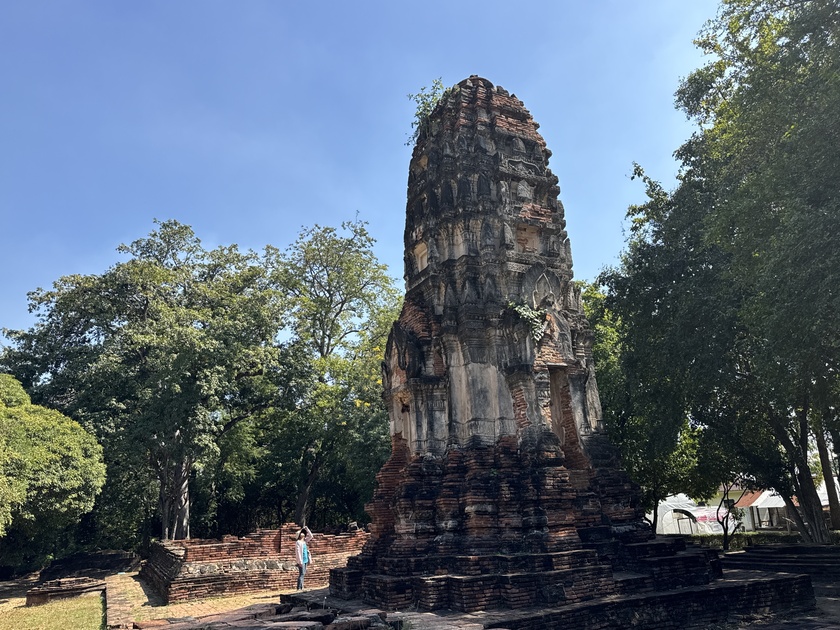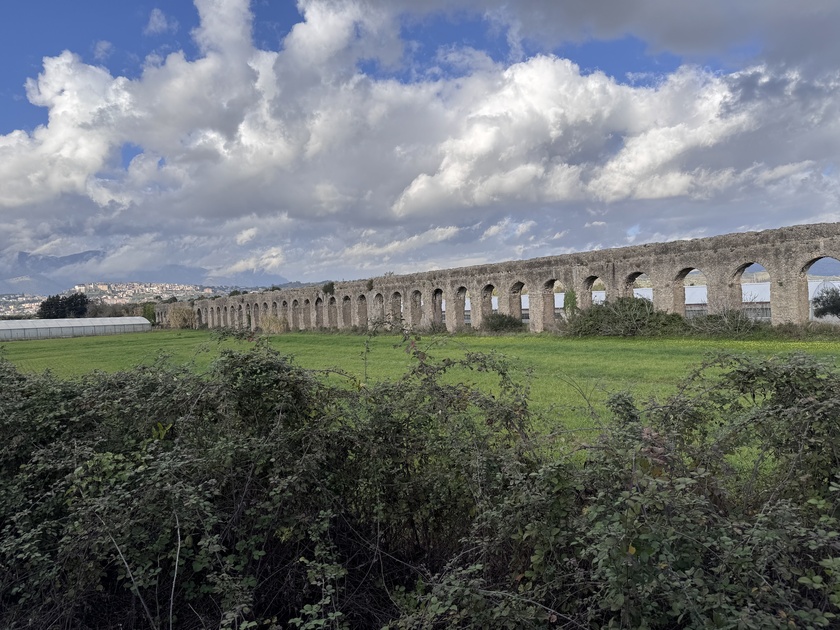Prasat Ta Moan Group
The Prasat Ta Moan Group is a collection of temples located on the Cambodia-Thailand border. The main temple site is Prasat Ta Moan Thom, which is claimed by both countries and is the largest temple in the group. It is situated in Ban Nong Khanna, Tambon Tamiang, right along the Thai-Cambodian border.
Prasat Ta Moan Thom was built during the 11th to 13th centuries by Udayadityavarman II and Jayavarman VII. The temple features a central square-shaped prang (tower) with a prominent projecting porch at the front, constructed from laterite and sandstone. It is oriented to the south, unusual for Khmer temples which usually face east, possibly due to the topography of the area.
Other temples in the group include Prasat Ta Muen and Prasat Ta Muen Toch, which are located on the Thai side of the border. Prasat Ta Muen Toch is one of King Jayavarman VII's arogyasalas, or hospital chapels, and it contains a central tower that opens to the east and is topped with a sandstone lotus bud.
The ...
Wat Tum (วัดตูม) is an active Buddhist temple located off Ayutthaya’s city island in the northern Wat Tum Sub-district, Phra Nakhon Si Ayutthaya, Thailand. While its exact construction date is unknown, it is believed to predate the Ayutthaya Kingdom (1351–1767), making it one of the older temples in the region. The temple was abandoned after the fall of Ayutthaya in 1767 but was later renovated during the reign of King Rama I (1782–1809) in the early Rattanakosin period.
Key Features and Significance
Wat Tum served as a ceremonial site for victory rituals before military parades, reflecting its cultural and historical importance during the Ayutthaya period.
The temple houses a revered bronze Buddha statue, “Luangpho Suk,” with a unique feature—a removable bun (topknot). Inside the bun, there is a cavity where clean water mysteriously seeps and never runs dry. This phenomenon is considered a wonder, and the bun is opened for public inspection only on the first day of each ...
Wat Som วัดส้ม
Wat Som or the Monastery of the Citrus Fruit. It is situated in the Ayutthaya Historical Park east of Khlong Chakra Yai and Somdet Phra Sri Nakharin Park (grandmothers park).
There is no record of when exactly the monastery was built. Experts do estimate it to be feom the early Ayutthaya era, somewhere around 1350 to 1488 because of the shape of its main Khmer style prang and the decorative stucco.
The prang has some of the best preserved stucco ornaments of any temple in Ayutthaya. There are highly detailed geometric patterns and a number of mythological figures like Rahu eating the moon during an eclipse. Its lintels are especially worth a look.
To the east of the prang lies the foundations of a small wihan that is down to its base. You can see what it would’ve looked like but there are no walls remaining.
According to the study of the principal pagoda, it was made from bricks and decorated with lintel and stucco reliefs. It indicates the structure revolution ...
The Roman Ruins of Ancient Minturnae at Minturno
The archaeological site of ancient Minturnae, located near the modern town of Minturno in southern Lazio, Italy, along the right bank of the Garigliano River (ancient Liris), represents a strategically vital Roman colony and port city on the Via Appia.
Originally settled by the Aurunci (or Ausones), an Italic tribe, the site was captured and destroyed by the Romans in 314 BC during the Second Samnite War, then refounded as a Roman castrum and maritime colony in 295 BC to secure control over the coastal route between Rome and Campania. Its position near the river mouth facilitated trade and naval access, making it a prosperous commercial hub.
Minturnae gained historical fame in 88 BC when the exiled general Gaius Marius hid in nearby marshes from Sulla’s pursuers before escaping by sea.
The colony was renewed under Augustus and significantly expanded by Hadrian in the 2nd century AD, with new public buildings reflecting imperial investment. The city ...


